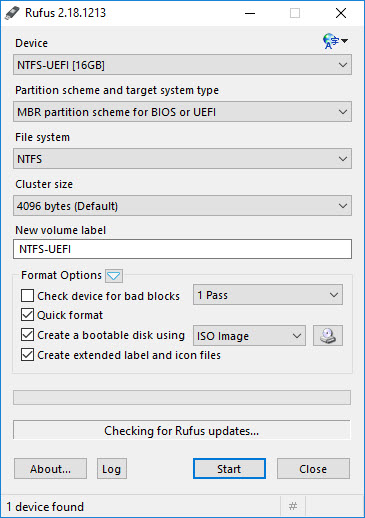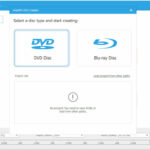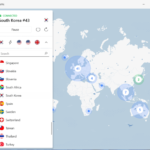In this post, we will show you how to install an use Rufus to create a bootable USB drive to install (almost) any OS
What is Rufus?
Rufus is a small utility that helps format and create bootable USB flash drives, such as memory sticks, USB keys and pen drives.

Rufus 2.18.1213
Rufus is helpful in the following cases:
– you need to create USB installation media from bootable ISOs (Windows, Linux, UEFI, etc.)
– you need to work on a system that doesn’t have an OS installed.
– you need to flash a BIOS or other firmware from DOS.
– you want to run a low-level utility.
Rufus can work with the following* ISOs: Windows Vista, Windows XP (SP2 or later), Windows 7, Windows 8, Windows 10, Windows Server 2003 R2, Archbang, Arch Linux, BartPE/pebuilder, Damn Small Linux, CentOS, Fedora, FreeDOS, Gentoo, gNewSense, Hiren’s Boot CD, LiveXP, Knoppix, Kubuntu, Linux Mint, NT Password Registry Editor, OpenSUSE, Parted Magic, Slackware, Ubuntu, Tails, Trinity Rescue Kit, Ultimate Boot CD.
Supported Languages: Bahasa Malaysia, Bahasa Indonesia, Dansk, Ceština, Deutsch, Español, English, Français, Italiano, Hrvatski, Latviešu, Lietuviu, Magyar, Norsk, Polski, Nederlands, Português do Brasil, Português, Slovensky, Româna Slovenšcina, Srpski, Svenska, Suomi, and Türkçe.
Read more: How to make a Windows 10 UEFI boot media using Rufus
You can download Rufus latest version from the official Rufus page.
How to Create a Bootable USB using Rufus
To begin, all you need is:
– PC running Windows XP or later (preferably Windows 7+)
– ISO (supported operating systems)
– Rufus application
– 8 GB USB flash drive (minimum recommended)
Here are the steps to create a bootable USB drive with Rufus:
1. Open Rufus tool.
2. Then, plug your clean USB stick into your computer. Rufus will automatically detect your USB. Click on Device and select the USB you want to use from the drop-down menu.
3. Make sure the Boot Selection option is change to Disk or ISO image then click Select. Find the ISO image you want to burn onto the USB and choose it.
4. Enter the Volume label a name of your choice, or leave it as it is, and once again leave the default settings for File system and Cluster size. Click on Start button to creating bootable USB.
5. You’ll get a warning saying that any data on the USB will be destroyed (this is normal). Click OK and Rufus will start creating the ISO image on the USB.
6. Once Rufus has finished creating the ISO image on the USB, close Rufus and your bootable USB is ready to use.
In this video, we are gonna show you how to create Bootable USB Drive for Windows 10 with Rufus 3.18:
Hope something helps you.





![How to Configure Proxy Settings on Android Devices [FREE] How to Configure Proxy Settings on Android Devices [FREE]](https://windows10freeapps.com/wp-content/uploads/2024/12/setting-up-a-proxy-for-a-wi-fi-network-1-150x150.jpeg)
